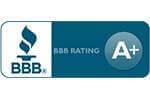A roof underlayment is a barrier that protects the sheathing and other wood components of your roof. It captures any moisture that has penetrated your shingles. It can be made from various waterproof or water-resistant materials.

There are three different types of roof underlayment material that you can choose from. Learning more about them can help you see if the materials are suitable for your roof materials and budget.
Read on to learn more about the various underlayment materials.
Asphalt-Saturated Felt
Asphalt-saturated felt uses felt paper with thick asphalt as its waterproofing material. Many homes continue to use this material today because asphalt-saturated felt is affordable, durable and effective. It can capture and prevent moisture from infiltrating your attic. It is perfect for asphalt shingles and slate tiles.
Synthetic
An upgrade to traditional asphalt-saturated felt is synthetic underlayment. This material use woven or spun polyethylene or polypropylene plastic, which is known for its resistance to water, tears and mold. It is more expensive than asphalt-saturated felt, but it can last for a long time. Synthetic underlayment works well with most roofing materials, but it does a great job of reducing a metal roof’s heat conductivity because of the underlayment’s good heat resistance.
Rubberized Asphalt
Rubberized asphalt combines the best aspects of asphalt-saturated felt and synthetic underlayment. It is completely waterproof because it has a high density of asphalt and rubber polymer. It also works well with most roofing materials because of its durability. Roofers can easily install rubberized asphalt using the thick adhesive layer on its backside. This adhesive layer adds further moisture protection, sealing the roof. Its only downside is that it is more expensive.
Hire Genesis Roofing for your project so that experienced roofers will work on your property. Call us at (515) 202-1667 or fill out this contact form to request a quote.











